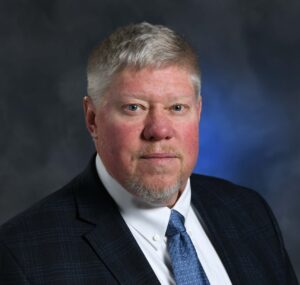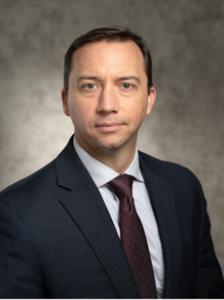2025 Agenda
Monday, January 27th
-
8:30 am — 1:00 pm
Pre-Conference Workshop Modernization: Delivering on the Strategic Deterrent
(Attend the Pre-Conference workshop for an additional $199 to your registration price – includes lunch in the Skyview Room).
*Pre-Conference Workshop is closed to Press.View the Pre-Conference Agenda
Sponsored by:
-
2:00 pm — 2:15 pm
Welcome to the 2025 Summit!
-
2:15 pm — 3:00 pm
Opening Keynote: Building Relationships
This keynote will focus on the ongoing relationships and communications between NNSA headquarters, the field offices, and the M&O partners. This session will discuss current updates, expectations and progress for delivery schedules, performance metrics and milestones.
 Teresa Robbins
Acting Administrator
National Nuclear Security Administration
Teresa Robbins
Acting Administrator
National Nuclear Security Administration
 DJ Johnson
Vice President
Honeywell Federal Solutions
Moderator
DJ Johnson
Vice President
Honeywell Federal Solutions
Moderator
-
3:00 pm — 3:30 pm
Trail Mix & Mingle Networking Break
-
3:30 pm — 4:15 pm
Furthering the AUKUS Partnership and the Path Forward
This session will address the maturing partnership among Australia, the United Kingdom, and the United States under the AUKUS trilateral agreement, which enables cooperation essential to Australia’s capacity to safely build, operate and maintain a conventionally armed, nuclear-powered submarine capability. The agreement serves as a critical platform for ensuring stability, fostering innovation, and bolstering shared defense capabilities. The session will explore recent developments and successes within the AUKUS framework, highlighting collaboration efforts in advanced technology sharing, infrastructure modernization, and nuclear-powered submarine capabilities.
 Mike Costas
Senior Vice President and General Manager
Bechtel National Inc.
Mike Costas
Senior Vice President and General Manager
Bechtel National Inc.
 Greg Meyer
Senior Vice President, Operations
Fluor Corporation
Greg Meyer
Senior Vice President, Operations
Fluor Corporation
 Michael Lempke
President, Global Security
HII Mission Technologies
Moderator
Michael Lempke
President, Global Security
HII Mission Technologies
Moderator
-
4:15 pm — 5:15 pm
Navigating Future Challenges in Nuclear Weapons Development: Strategic Solutions from NNSA Lab Directors
In an era marked by rapid technological advancement, geopolitical shifts, and evolving security threats, NNSA lab directors face unprecedented challenges in the development, maintenance, and modernization of the U.S. nuclear arsenal. Join the directors of Lawrence Livermore, Los Alamos and Sandia National Laboratories to explore the future landscape of nuclear weapons development, focusing on strategic solutions to emerging challenges.
Discussions will cover the integration of cutting-edge technologies, maintaining safety and security in a rapidly changing environment, workforce development, and the role of international collaboration. Attendees will gain insights into navigating the complexities of nuclear deterrence, ensuring national security, and sustaining innovation in the face of budgetary and political constraints and what comes next.
 Kimberly S. Budil, PhD
Director
Lawrence Livermore National Laboratory
Kimberly S. Budil, PhD
Director
Lawrence Livermore National Laboratory
 Thomas Mason, PhD
Director
Los Alamos National Laboratory
Thomas Mason, PhD
Director
Los Alamos National Laboratory
 James Peery, PhD
Laboratories Director
Sandia National Laboratories
James Peery, PhD
Laboratories Director
Sandia National Laboratories
 John Longenecker
Chief Executive Officer
Longenecker & Associates
Moderator
John Longenecker
Chief Executive Officer
Longenecker & Associates
Moderator
-
5:15 pm — 6:45 pm
Aloha Nights Welcome Reception
Join us for the Aloha Nights Welcome Reception. Immerse yourself in a vibrant Hawaiian atmosphere as you savor delicious themed food and beverages while networking with fellow attendees and speakers.
Capture the moment at our digital photo station, featuring a variety of themed backdrops that perfectly embody the Aloha spirit. After snapping your photos, easily text or email them directly to yourself, creating lasting memories of the evening.
Enjoy the lively sounds of a live band, setting the perfect backdrop for great conversation and connection. Don’t miss this opportunity to kick off the conference with delightful food, fun photos, and fantastic entertainment. We look forward to seeing you there!
Sponsored by:
Tuesday, January 28th
-
7:30 am — 8:30 am
Networking Breakfast
-
8:30 am — 9:15 am
Morning Keynote: Updates from NNSA Leadership
This session will discuss the latest priorities for the NNSA Leadership including, workforce recruitment and retention, ongoing challenges in infrastructure while building for future needs and requirements, monitoring pit production in accordance with DoD needs including the changing security landscape and maximizing NNSA capabilities for other challenges.
 James McConnell
Associate Principal Deputy Administrator
National Nuclear Security Administration
James McConnell
Associate Principal Deputy Administrator
National Nuclear Security Administration
 Cheryl Cabbil
Senior Vice President, Environment & Defense Division, Energy & Environment
Amentum
Moderator
Cheryl Cabbil
Senior Vice President, Environment & Defense Division, Energy & Environment
Amentum
Moderator
-
9:15 am — 10:00 am
Pit Production Current Updates and Future Projections
In this panel, our speakers will provide information related to the Pit Production Mission. NNSA Headquarters will provide a program overview, highlights of this mission from 2024, and then successful initiatives that are enabling the Pit Mission execution including the highlights for the two site solution. We will hear from representatives at Los Alamos National Lab and the Savannah River Site who will provide program information from their respective Pit Missions.
 Audrey Beldio
Principal Assistant Deputy Administrator for Production Modernization & Materials Management
National Nuclear Security Administration
Audrey Beldio
Principal Assistant Deputy Administrator for Production Modernization & Materials Management
National Nuclear Security Administration
 David Dooley
Associate Laboratory Director Weapons Production
Los Alamos National Laboratory
David Dooley
Associate Laboratory Director Weapons Production
Los Alamos National Laboratory
 Michael Mikolanis
Manager
NNSA Savannah River Field Office
Michael Mikolanis
Manager
NNSA Savannah River Field Office
 Tony Wampler
Senior Business Development Director
Merrick & Company
Moderator
Tony Wampler
Senior Business Development Director
Merrick & Company
Moderator
-
10:00 am — 10:30 am
Popcorn Social Networking Break
-
10:30 am — 11:45 am
Perspectives from NNSA Site Operations
Gain insights into the operational challenges and strategic initiatives at the (NNSA) sites. This session will feature key leaders from various NNSA facilities who will share their perspectives on managing site operations, maintaining safety standards, and advancing mission-critical objectives. Attendees will hear about the latest developments in site management, collaboration across facilities, and the innovative approaches being employed to ensure national security and technological advancement and guidelines to assist sites to move into the next phase.
 Kelly Beierschmitt
President and General Manager
PanTeXas Deterrence, LLC
Kelly Beierschmitt
President and General Manager
PanTeXas Deterrence, LLC
 Dennis Carr
President and Chief Executive Officer
Savannah River Nuclear Solutions, LLC
Dennis Carr
President and Chief Executive Officer
Savannah River Nuclear Solutions, LLC
 Roger Rocha
President
Mission Support and Test Services, LLC (NNSS)
Roger Rocha
President
Mission Support and Test Services, LLC (NNSS)
 Richard Tighe, PhD
President and Chief Executive Officer
Consolidated Nuclear Security, LLC
Richard Tighe, PhD
President and Chief Executive Officer
Consolidated Nuclear Security, LLC
 Eric Wollerman
President
Honeywell Federal Manufacturing and Technologies
Eric Wollerman
President
Honeywell Federal Manufacturing and Technologies
 Christine Gelles
Chief Operating Officer
Longenecker & Associates
Moderator
Christine Gelles
Chief Operating Officer
Longenecker & Associates
Moderator
-
11:45 am — 12:30 pm
National Security Implications of the Front End of the Nuclear Fuel Cycle
A thriving domestic nuclear fuel cycle is critical for civilian nuclear energy, but also has important implications for national security. This panel will discuss strategies for revitalizing America’s nuclear fuel supply chain — from mining to conversion to enrichment – to meet unobligated national security needs as well as civilian requirements.
 Malcolm Critchley
President and Chief Executive Officer
ConverDyn
Malcolm Critchley
President and Chief Executive Officer
ConverDyn
 Scott Melbye
President, Uranium Producers of America & Executive Vice President
Uranium Energy Corporation
Scott Melbye
President, Uranium Producers of America & Executive Vice President
Uranium Energy Corporation
 Amir Vexler
President & Chief Executive Officer
Centrus Energy
Amir Vexler
President & Chief Executive Officer
Centrus Energy
 Thomas D’Agostino
Group President, Mission Solutions
Fluor Corporation
Moderator
Thomas D’Agostino
Group President, Mission Solutions
Fluor Corporation
Moderator
-
12:30 pm — 1:45 pm
NNSS 75th Anniversary Networking Luncheon
Honeywell cordially invites you to a special celebration luncheon honoring the remarkable achievements and contributions of the Nevada National Security Sites over the past 75 years. Join us for an afternoon of recognition and celebration, beginning with a delicious lunch, followed by a champagne toast and inspiring remarks from MSTS President Roger Rocha. We look forward to celebrating this milestone together, with more exciting moments to come.
Sponsored by:

-
1:45 pm — 2:45 pm
Beyond Boundaries: Integrating Federal, Corporate, and Community Partnerships for Comprehensive Nuclear Deterrence and Resilience
This session explores innovative approaches to strengthening nuclear deterrence by engaging not just federal entities but also corporate partners, small businesses, and local communities. By fostering inclusivity and expanding the scope of deterrence strategies, this discussion will aim to build a resilient and holistic defense ecosystem. Panelists will discuss leveraging public-private partnerships to enhance critical infrastructure protection against nuclear threats, the role of small businesses in supply chain security and emerging technologies, collaborative frameworks for multi-sector preparedness and response and lessons learned from cybersecurity and counterterrorism to mitigate cascading risks in nuclear deterrence.
 Martie Larson, CPC, ELI-MP, CLDS, PMP
Founder and President
Genuine Success, LLC
Martie Larson, CPC, ELI-MP, CLDS, PMP
Founder and President
Genuine Success, LLC
 Vayl Oxford
Strategic Advisor and Director for Global Security Strategy
Savannah River National Laboratory
Vayl Oxford
Strategic Advisor and Director for Global Security Strategy
Savannah River National Laboratory
 Ambrosia Patterson
Change and Transformation Lead Senior Manager
Accenture Federal Services
Ambrosia Patterson
Change and Transformation Lead Senior Manager
Accenture Federal Services
 Kyle Kilroy, PhD, PE, C Eng.
Senior Director, Operations
Management Solutions, LLC
Moderator
Kyle Kilroy, PhD, PE, C Eng.
Senior Director, Operations
Management Solutions, LLC
Moderator
-
2:45 pm — 3:45 pm
Infrastructure Initiatives and the Path Forward
The National Nuclear Security Administration’s (NNSA) infrastructure modernization initiative is a decades-long effort to modernize and expand the facilities and infrastructure needed to produce nuclear weapons. The initiative uses data-driven and risk informed decision making tools to ensure efficiency and repeatable results for construction projects, repurposing, upgrading current capabilities including, uranium enrichment, plutonium pit production, lithium processing, and tritium processing, are reliable for the future nuclear stockpile.
 Daryl Hauck, PhD
Manager, Sandia National Laboratories Field Office
National Nuclear Security Administration
Daryl Hauck, PhD
Manager, Sandia National Laboratories Field Office
National Nuclear Security Administration
 Mary Helen Hitson
Manager
NNSA Y-12 Field Office
Mary Helen Hitson
Manager
NNSA Y-12 Field Office
 Nicole Nelson-Jean
Associate Administrator, Office of Infrastructure
National Nuclear Security Administration
Nicole Nelson-Jean
Associate Administrator, Office of Infrastructure
National Nuclear Security Administration
 Darnell Wagstaffe
Senior Vice President and Sector Manager, Infrastructure Solutions
Parsons
Moderator
Darnell Wagstaffe
Senior Vice President and Sector Manager, Infrastructure Solutions
Parsons
Moderator
-
3:45 pm — 4:15 pm
Sugar Rush Networking Break
-
4:15 pm — 5:00 pm
Digital Engineering Implementation in Nuclear Weapons Delivery
Digital engineering will help the Nuclear Security Enterprise (NSE) meet the crucial operational needs of nuclear deterrence, as well as other mission areas that deliver critical systems to the nation. At last year’s event, NNSA stated that digital engineering was a top priority and since then, it established a Digital Transformation Steering Group to address both challenges and solutions for the implementation. Digital engineering can be applied to many capabilities that facilitate increased collaboration while reducing the time required to execute programs, by shifting away from traditional and cumbersome paper-based documentation. This panel will discuss the capability that is in the process of establishing for the NSE, and how it will benefit our enterprise.
 James Wolff
Associate Administrator for Information Management and Chief Information Officer
National Nuclear Security Administration
James Wolff
Associate Administrator for Information Management and Chief Information Officer
National Nuclear Security Administration
 Angela Sheffield
Director, Digital and Artificial Intelligence Portfolio Air Force & DoD Commands Business Group
SAIC
Moderator
Angela Sheffield
Director, Digital and Artificial Intelligence Portfolio Air Force & DoD Commands Business Group
SAIC
Moderator
-
5:00 pm — 6:00 pm
Workforce Development Challenges, Successes and Future Plans
Staffing shortages and mismatches of skills with work requirements pose risks to production goals, cleanup initiatives, and national security implications. NNSA and its contractors have developed a workforce planning processes and tools to accurately predict the mix of skills and quantity of personnel needed to deliver the NNSA mission today and tomorrow. This panel discusses techniques for projecting multi-year workforce needs in a complex environment, including identifying the skills and qualifications projected to be in the highest demand and recruiting, training, and retaining personnel to meet that demand.
 Sean Alford, PhD
Executive Vice President and Chief Administrative Officer
Savannah River Nuclear Solutions, LLC
Sean Alford, PhD
Executive Vice President and Chief Administrative Officer
Savannah River Nuclear Solutions, LLC
 Carl Beard, PhD
Production Operations Director
PanTeXas Deterrence, LLC
Carl Beard, PhD
Production Operations Director
PanTeXas Deterrence, LLC
 Frank Gibbs, PhD
Senior Nuclear Advisor, TechSource & Adjunct Professor
The University of Texas at El Paso
Frank Gibbs, PhD
Senior Nuclear Advisor, TechSource & Adjunct Professor
The University of Texas at El Paso
 Keith Wing
Strategic Advisor
Management Solutions, LLC
Moderator
Keith Wing
Strategic Advisor
Management Solutions, LLC
Moderator
-
6:00 pm — 7:30 pm
Tacos & Tequila Fiesta Reception
Join us for a vibrant evening at the Tacos & Tequila Fiesta, a special networking reception designed to bring attendees together in a relaxed and enjoyable atmosphere. Sponsored by Fluor, this lively event invites you to indulge in a delicious taco station and savor our specialty margaritas and refreshing mocktails as you mingle with industry peers and leaders, all while enjoying the lively music that sets the perfect backdrop for conversation and connection. The reception will take place in the exhibit hall, providing the ideal setting for making meaningful connections amidst the flavors of Mexico.
Don’t miss this opportunity to enjoy great food, delightful drinks, and engage in inspiring discussions. Whether you’re looking to unwind after a day of sessions or to spark new collaborations, the Tacos & Tequila Fiesta Reception promises to be an unforgettable highlight of the event!
Sponsored by:
Wednesday, January 29th
-
7:30 am — 8:30 am
Networking Breakfast
-
8:30 am — 9:30 am
Morning Keynote: Managing Global Risk
Do our current risk management processes really support fully informed decision making at all levels, from strategic down to technical risk? This session will first explore how our definitions of risk and our tools do or do not support effectively analyzing, integrating, and managing risks to achieve our objectives. Then, the discussion will shift to the decision makers, focusing on the challenges they face and how they can best use knowledge of risk to navigate the path to success.
 Todd Ailes
Project Manager, Pueblo Chemical Agent - Destruction Pilot Plant
Bechtel National Inc.
Todd Ailes
Project Manager, Pueblo Chemical Agent - Destruction Pilot Plant
Bechtel National Inc.
 Vice Admiral Terry Benedict
(USN Retired), President
Systems Planning & Analysis
Vice Admiral Terry Benedict
(USN Retired), President
Systems Planning & Analysis
-
9:30 am — 10:30 am
Weapons Directors Update
Join our national laboratory weapons program directors to discuss a non-classified overview of current weapons programs, the challenges of design and maintenance projects dealing with system alterations, life-extension, stewardship, the impact and consequences of recapitalization, schedule compression due to mission expansion, and initiatives for improved mission delivery.
 Dave Hoagland
Executive Principal Deputy Administrator Defense Programs
National Nuclear Security Administration
Dave Hoagland
Executive Principal Deputy Administrator Defense Programs
National Nuclear Security Administration
 Laura McGill
Deputy Laboratories Director for Nuclear Deterrence and Chief Technology Officer
Sandia National Laboratories
Laura McGill
Deputy Laboratories Director for Nuclear Deterrence and Chief Technology Officer
Sandia National Laboratories
 Bradley Wallin, PhD
Deputy Director Strategic Deterrence
Lawrence Livermore National Laboratory
Bradley Wallin, PhD
Deputy Director Strategic Deterrence
Lawrence Livermore National Laboratory
 Robert Webster, PhD
Deputy Director, Weapons
Los Alamos National Laboratory
Robert Webster, PhD
Deputy Director, Weapons
Los Alamos National Laboratory
 Brian D’Andrea
Chairman and Chief Executive Officer
TechSource, Inc.
Moderator
Brian D’Andrea
Chairman and Chief Executive Officer
TechSource, Inc.
Moderator
-
10:30 am — 11:00 am
Cookies & Conversations Networking Break
-
11:00 am — 11:00 am
Conference Ends









